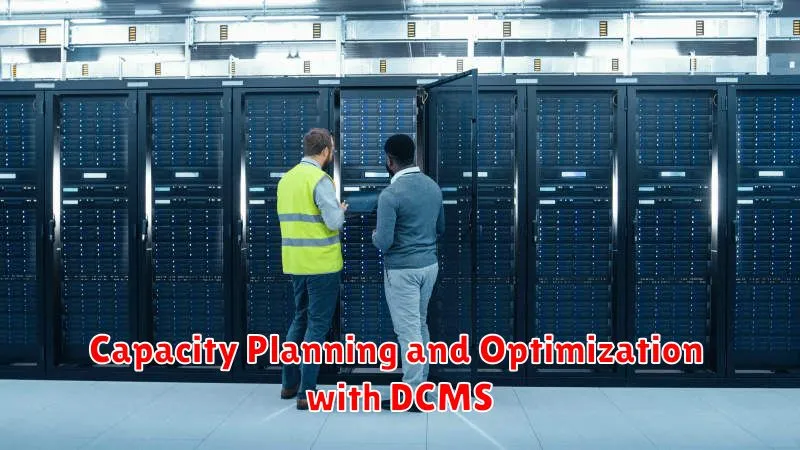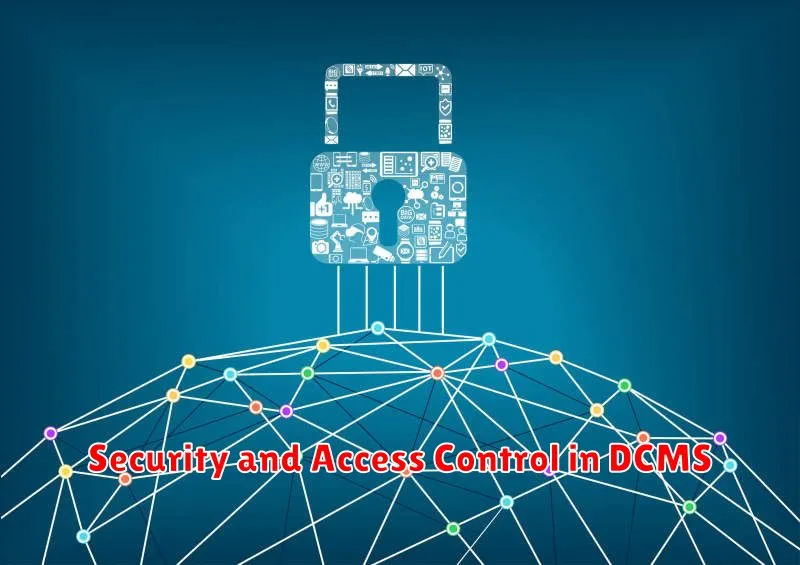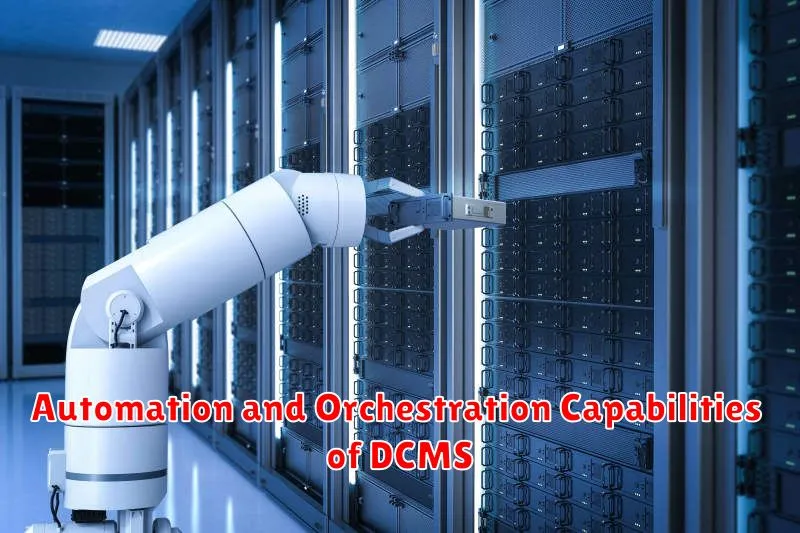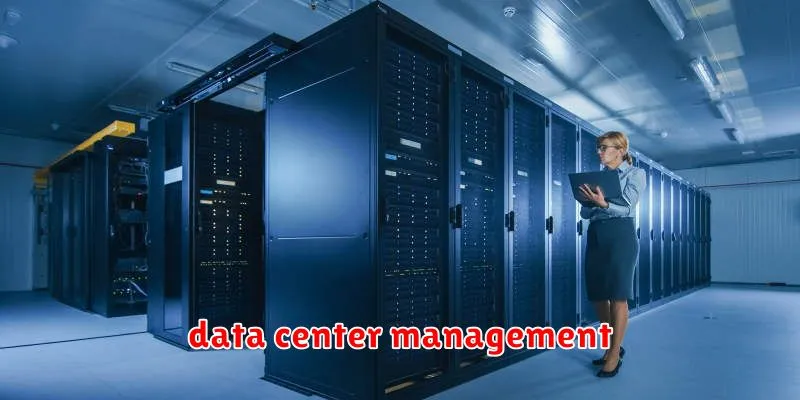In today’s digital landscape, data centers are the heart of every organization’s operations, housing critical infrastructure and driving essential business processes. With the ever-increasing demand for computing power and storage capacity, managing these complex environments efficiently is crucial for maximizing performance and achieving optimal results. This is where data center management software comes into play, providing a comprehensive suite of tools to streamline operations, enhance security, and ensure seamless performance.
Data center management software offers a wide range of features designed to address the multifaceted challenges of managing modern data centers. From monitoring and controlling environmental conditions to automating tasks and optimizing resource allocation, these solutions empower IT professionals to gain complete visibility into their infrastructure, identify potential issues proactively, and optimize resource utilization. By embracing these powerful tools, organizations can unlock significant benefits, including improved efficiency, reduced costs, and enhanced security for their vital data center operations.
Understanding Data Center Management Software
In today’s digital age, data centers are the backbone of organizations, housing critical infrastructure and enabling businesses to operate smoothly. Efficiently managing these complex environments requires a robust solution, and that’s where data center management software comes in.
Data center management software is a comprehensive suite of tools designed to streamline operations, optimize performance, and ensure high availability. It provides a centralized platform for monitoring, controlling, and automating various aspects of the data center, from physical infrastructure to virtualized environments.
Here’s a breakdown of key functionalities offered by data center management software:
- Infrastructure Monitoring: Real-time monitoring of critical infrastructure components like servers, storage devices, network switches, and power systems.
- Capacity Planning: Forecasting future resource needs and optimizing capacity utilization to prevent overprovisioning and minimize costs.
- Virtualization Management: Managing and automating virtual machines (VMs), including provisioning, deployment, and lifecycle management.
- Security Management: Implementing security policies, monitoring for threats, and ensuring data integrity.
- Energy Management: Optimizing energy consumption through load balancing, power management, and environmental controls.
- Automation and Orchestration: Automating repetitive tasks, simplifying complex workflows, and reducing manual intervention.
By leveraging data center management software, organizations can achieve significant benefits, including:
- Improved Operational Efficiency: Automating tasks, reducing downtime, and streamlining workflows.
- Enhanced Performance: Optimizing resource utilization, managing capacity effectively, and ensuring high availability.
- Reduced Costs: Minimizing energy consumption, preventing overprovisioning, and optimizing resource allocation.
- Increased Security: Implementing robust security measures, detecting threats proactively, and protecting sensitive data.
- Better Compliance: Ensuring adherence to regulatory standards and industry best practices.
Ultimately, data center management software empowers organizations to manage their data centers more effectively, driving operational efficiency, maximizing performance, and ensuring business continuity.
Key Features of Effective DCMS Solutions
In today’s digital age, data centers are the lifeblood of businesses. To ensure optimal performance and efficiency, implementing a robust Data Center Management Software (DCMS) solution is crucial. Effective DCMS solutions offer a range of features that streamline operations, optimize resource utilization, and enhance overall data center efficiency. Here are some key features to look for in a DCMS solution:
Real-time Monitoring and Analytics: A powerful DCMS should provide comprehensive monitoring capabilities, allowing you to track critical parameters like temperature, humidity, power consumption, and server performance in real-time. Advanced analytics tools can help identify potential issues, predict failures, and optimize resource allocation.
Automated Task Management: Automating routine tasks such as provisioning, patching, and capacity planning can significantly reduce manual effort and improve efficiency. DCMS solutions with automated workflows can streamline processes, minimizing downtime and human error.
Asset Management: Tracking and managing all your data center assets, from servers and network devices to cabling and power distribution units, is essential. A comprehensive DCMS should provide a centralized inventory management system, allowing for efficient asset tracking, lifecycle management, and reporting.
Security and Compliance: Ensuring the security and compliance of your data center is paramount. Effective DCMS solutions should include features for access control, user authentication, and security auditing. They should also facilitate compliance with industry standards and regulations such as HIPAA, PCI DSS, and GDPR.
Reporting and Visualization: Generating insightful reports and dashboards is essential for understanding your data center’s performance and identifying areas for improvement. A robust DCMS should provide customizable reports, visualizations, and trend analysis tools to gain valuable insights from your data.
Scalability and Integration: Your DCMS solution should be able to scale with your business needs, supporting both small and large data centers. It should also seamlessly integrate with your existing infrastructure and other IT systems, such as monitoring tools, ticketing systems, and cloud platforms.
Benefits of Implementing Data Center Management Software
In today’s rapidly evolving digital landscape, data centers are the backbone of businesses, enabling them to operate smoothly and efficiently. However, managing a complex data center environment can be a daunting task, often requiring significant resources and expertise. This is where data center management software comes in. This powerful tool empowers organizations to streamline operations, optimize performance, and enhance overall efficiency.
Implementing data center management software offers a myriad of benefits, transforming how organizations manage their IT infrastructure. One of the most notable advantages is improved visibility. With a centralized platform, administrators gain comprehensive insights into the entire data center, including hardware, software, and network resources. This enhanced visibility allows for proactive monitoring and early detection of potential issues, minimizing downtime and ensuring continuous operations.
Another significant benefit is automated provisioning and management. Data center management software automates tasks such as server provisioning, resource allocation, and configuration changes. This automation reduces manual intervention, minimizing errors and increasing efficiency. Organizations can deploy resources faster, scale their infrastructure on demand, and respond to changing business needs with agility.
Furthermore, data center management software plays a crucial role in cost optimization. By automating processes and providing insights into resource utilization, organizations can identify areas of waste and optimize resource allocation. This leads to significant cost savings on energy consumption, hardware maintenance, and personnel expenses.
In conclusion, implementing data center management software provides numerous benefits, including improved visibility, automated provisioning and management, cost optimization, and enhanced security. Organizations that embrace this technology can streamline operations, enhance performance, and gain a competitive edge in the digital age.
Top Considerations When Choosing DCMS
Choosing the right Data Center Management Software (DCMS) is crucial for optimizing your data center’s performance, efficiency, and security. With numerous options available, navigating the decision-making process can be daunting. To guide you through this crucial selection, consider these key factors:
1. Scalability and Flexibility
Your DCMS should be able to scale with your growing infrastructure needs. Consider the flexibility to accommodate future expansion, increased capacity requirements, and integration with emerging technologies. Evaluate the software’s ability to handle a growing number of servers, virtual machines, and network devices.
2. Comprehensive Monitoring and Reporting
Real-time visibility into your data center’s performance is essential. Look for a DCMS that offers comprehensive monitoring of key metrics like server utilization, power consumption, environmental conditions, and network traffic. Robust reporting features should enable you to generate detailed insights, identify potential issues, and optimize resource allocation.
3. Security and Compliance
Security is paramount in a data center environment. Select a DCMS with robust security features, including access control, encryption, and audit trails. Ensure the software complies with relevant industry standards and regulations such as HIPAA, PCI DSS, and GDPR, depending on your specific needs.
4. User-Friendliness and Integration
The DCMS should be intuitive and easy to use for your IT staff. Look for a user-friendly interface, customizable dashboards, and seamless integration with your existing IT infrastructure. This will minimize training requirements and maximize adoption.
5. Cost and ROI
Consider the overall cost of the DCMS, including initial investment, licensing fees, and ongoing maintenance. Evaluate the software’s potential to generate significant ROI through improved efficiency, reduced downtime, and minimized operational expenses.
6. Vendor Support and Services
Choose a vendor with a strong track record of customer support and reliable services. Consider factors like response times, knowledge base availability, and training programs to ensure you have access to the support you need.
By carefully considering these factors, you can make an informed decision and choose the right DCMS to streamline your data center operations and achieve optimal performance.
Integrating DCMS with Existing IT Infrastructure
Integrating a Data Center Management Software (DCMS) with your existing IT infrastructure is a crucial step toward realizing the full benefits of a DCMS. This integration process involves seamlessly connecting the DCMS with your existing systems, such as monitoring tools, asset management databases, and ticketing systems. This integration ensures that data flows smoothly between different systems, enabling a unified view of your data center’s performance and resources.
When considering integration, it’s essential to understand the capabilities and limitations of your existing infrastructure. Determine which systems need to be integrated with the DCMS and evaluate the level of automation required. For example, you might need to integrate with your network management system for real-time performance monitoring, your asset management system for inventory tracking, or your ticketing system for incident management.
The integration process may involve using APIs (Application Programming Interfaces), data synchronization tools, or custom scripting. It’s important to select the appropriate integration methods based on your specific requirements and technical capabilities. With successful integration, you can achieve a consolidated view of your data center, automate repetitive tasks, and streamline your operations for optimal performance.
Best Practices for Data Center Management
Data center management software is crucial for streamlining operations and ensuring optimal performance. By leveraging these tools, businesses can achieve greater efficiency, reduce costs, and enhance overall data center management practices. Implementing the following best practices will further amplify the benefits of such software:
1. Establish Clear Objectives and KPIs: Define specific goals for your data center, such as reducing energy consumption, minimizing downtime, or improving capacity utilization. Setting measurable Key Performance Indicators (KPIs) will provide a benchmark for progress and allow you to assess the effectiveness of your management strategies.
2. Automate Routine Tasks: Data center management software automates repetitive tasks like server provisioning, patch management, and monitoring, freeing up IT staff to focus on more strategic initiatives. This automation not only saves time but also reduces the risk of human error.
3. Implement a Robust Monitoring System: Continuously monitor critical infrastructure components such as power, temperature, and network connectivity. Real-time alerts and proactive notifications can prevent potential issues from escalating into major disruptions.
4. Leverage Data Analytics: Utilize the data collected by your management software to gain insights into data center performance. Analyze trends, identify bottlenecks, and make informed decisions based on data-driven evidence.
5. Ensure Security and Compliance: Data center management software plays a vital role in ensuring data security and compliance with industry regulations. Implement robust security measures and ensure adherence to relevant standards such as HIPAA or PCI DSS.
6. Foster Collaboration: Encourage collaboration among IT teams and other departments involved in data center operations. Effective communication and shared responsibility are essential for successful management.
By embracing these best practices, organizations can maximize the value of their data center management software and achieve significant improvements in efficiency, reliability, and cost optimization.
Future Trends in Data Center Management Software
The landscape of data center management software is constantly evolving, driven by the growing demand for efficiency, scalability, and resilience. As we look ahead, several key trends are shaping the future of this critical technology.
1. Artificial Intelligence (AI) and Machine Learning (ML): AI and ML are poised to revolutionize data center management. Predictive analytics powered by these technologies will help anticipate issues, optimize resource allocation, and automate routine tasks. This will allow for proactive maintenance and reduced downtime.
2. Cloud-Native Management: Cloud-native platforms offer flexibility and scalability, allowing data centers to adapt to changing demands. Expect to see more integrated solutions that leverage cloud-based architectures for seamless management and orchestration.
3. Enhanced Security: As cyber threats become more sophisticated, data center management software will need to incorporate advanced security features. This includes real-time threat detection, intrusion prevention, and robust access control mechanisms.
4. Edge Computing Integration: The rise of edge computing demands new management approaches. Data center software will need to effectively manage distributed infrastructure, ensuring data sovereignty and efficient resource utilization at the edge.
5. Sustainability Focus: Sustainability is becoming increasingly important. Data center management software will play a crucial role in optimizing energy consumption, reducing carbon footprint, and promoting sustainable operations.
These trends signify a future where data center management software will become even more intelligent, proactive, and adaptable. By embracing these innovations, organizations can ensure their data centers operate at peak performance while meeting the demands of a rapidly evolving digital landscape.
Data Center Infrastructure Management (DCIM): A Deep Dive

In the ever-evolving landscape of technology, data centers are the lifeblood of modern businesses. As the demand for computing power and data storage continues to skyrocket, optimizing data center operations has become paramount. Enter Data Center Infrastructure Management (DCIM), a comprehensive solution designed to streamline and enhance the management of these critical facilities.
DCIM encompasses a range of software tools and methodologies that provide a unified platform for monitoring, controlling, and optimizing all aspects of a data center’s infrastructure. From physical infrastructure like power and cooling systems to virtualized resources such as servers and storage, DCIM offers a holistic view of the data center ecosystem.
At its core, DCIM empowers organizations to achieve several key objectives:
- Increased Efficiency: By automating tasks, eliminating manual processes, and optimizing resource utilization, DCIM significantly improves data center efficiency, reducing operational costs and maximizing performance.
- Enhanced Capacity Planning: With real-time insights into capacity utilization, DCIM enables proactive capacity planning, ensuring that the data center can accommodate future growth and prevent potential bottlenecks.
- Improved Reliability and Availability: By monitoring critical infrastructure components and proactively identifying potential issues, DCIM helps prevent downtime and ensure uninterrupted service delivery.
- Reduced Energy Consumption: DCIM plays a crucial role in optimizing energy consumption within the data center, reducing environmental impact and lowering operating costs.
- Enhanced Security: DCIM solutions incorporate robust security features to protect sensitive data and infrastructure from unauthorized access and cyber threats.
DCIM solutions typically include a wide range of functionalities, encompassing:
- Asset Management: Comprehensive inventory management of all physical and virtual assets within the data center.
- Power and Cooling Management: Monitoring and controlling power and cooling systems to ensure optimal performance and efficiency.
- Environmental Monitoring: Tracking temperature, humidity, and other environmental factors to maintain optimal operating conditions.
- Capacity Planning and Forecasting: Predicting future capacity needs and optimizing resource allocation.
- Change Management: Managing and controlling infrastructure changes to minimize disruption and ensure smooth operations.
- Reporting and Analytics: Generating comprehensive reports and visualizations to provide actionable insights into data center performance.
As data centers continue to evolve in complexity and scale, DCIM has emerged as an indispensable tool for organizations seeking to optimize their operations, enhance reliability, and maximize return on investment. By embracing a holistic approach to data center management, DCIM empowers organizations to navigate the ever-changing technological landscape with confidence and agility.
Capacity Planning and Optimization with DCMS

Data center management software (DCMS) is a powerful tool that can help organizations streamline their operations and optimize performance. One of the key benefits of DCMS is its ability to assist with capacity planning and optimization. By providing real-time insights into resource utilization, DCMS empowers organizations to make informed decisions regarding capacity allocation, ensuring that their infrastructure meets current and future demands.
Capacity planning involves forecasting future resource requirements based on historical data and business growth projections. DCMS enables organizations to analyze trends in server utilization, storage consumption, and network bandwidth, providing a comprehensive overview of resource consumption patterns. This data allows them to predict future needs and proactively scale their infrastructure to avoid performance bottlenecks and ensure smooth operations.
Optimization, on the other hand, focuses on maximizing the efficiency of existing resources. DCMS offers features like resource allocation optimization and power management tools. By leveraging these features, organizations can identify underutilized resources and reallocate them to areas with higher demand. This optimization strategy not only improves resource utilization but also reduces operational costs and environmental impact.
DCMS also facilitates efficient capacity planning and optimization by:
- Monitoring and analyzing performance data: Real-time monitoring of server load, storage utilization, and network traffic provides valuable insights into resource utilization patterns, enabling organizations to make data-driven decisions regarding capacity planning.
- Automating resource provisioning: DCMS can automate the provisioning of resources based on predefined thresholds, ensuring that capacity is allocated dynamically to meet changing demands. This eliminates manual intervention and reduces the risk of human error.
- Predictive analytics: By leveraging historical data and machine learning algorithms, DCMS can predict future resource needs, enabling organizations to proactively scale their infrastructure and avoid potential performance issues.
In conclusion, DCMS plays a vital role in capacity planning and optimization by providing organizations with the necessary tools and insights to efficiently manage their data center resources. By leveraging DCMS, organizations can ensure that their infrastructure is optimized for performance, scalability, and cost-efficiency, ultimately contributing to the overall success of their business operations.
Security and Access Control in DCMS

Data center management software (DCMS) plays a crucial role in maintaining the security and accessibility of your critical infrastructure. Security and access control are fundamental aspects of any DCMS solution, ensuring that only authorized personnel can access sensitive data and systems.
A robust DCMS platform implements a multi-layered approach to security. This includes:
- Role-based access control (RBAC): Allows administrators to define user roles and assign specific permissions based on their responsibilities. This ensures that users only have access to the information and resources they need to perform their tasks.
- Multi-factor authentication (MFA): Adds an extra layer of security by requiring users to provide multiple forms of authentication, such as a password and a one-time code, before accessing the system. This prevents unauthorized access even if a password is compromised.
- Auditing and logging: Records all actions performed by users, providing a detailed audit trail for security investigations and compliance purposes.
- Data encryption: Protects sensitive data in transit and at rest, ensuring that it remains confidential even if the system is compromised.
By implementing these security features, DCMS solutions safeguard your data center from unauthorized access, data breaches, and other security threats. Effective access control measures also streamline operations by ensuring that only authorized personnel can perform specific tasks, reducing the risk of errors and improving overall efficiency.
Monitoring and Alerting for Proactive Management

Data center management software is essential for ensuring the smooth operation and optimal performance of your IT infrastructure. One of the most critical aspects of this software is its ability to provide comprehensive monitoring and alerting capabilities. This allows IT professionals to identify potential problems before they impact users and services.
Monitoring involves continuously collecting data on various metrics, including server performance, network traffic, storage utilization, and application health. This data provides a real-time snapshot of the data center’s status and allows administrators to track trends and identify potential issues.
Alerting plays a vital role in proactive management by notifying administrators when predefined thresholds are breached. This could include alerts for high CPU usage, disk space nearing capacity, or network connectivity issues. Prompt alerts enable quick intervention, preventing minor issues from escalating into major outages.
Effective monitoring and alerting systems go beyond basic notifications. They allow administrators to configure customizable alerts based on specific needs, including severity levels, escalation procedures, and automated remediation actions. This ensures that the right people are alerted at the right time and that appropriate steps are taken to resolve issues efficiently.
By leveraging monitoring and alerting features within data center management software, organizations can achieve:
- Enhanced uptime by identifying and addressing issues before they impact users.
- Reduced downtime by minimizing the time needed to resolve issues.
- Improved resource utilization by proactively identifying and addressing performance bottlenecks.
- Cost savings through reduced maintenance and support costs.
- Increased efficiency by automating routine tasks and streamlining operations.
In conclusion, monitoring and alerting are crucial components of data center management software, empowering IT professionals with the insights and tools needed for proactive management. By leveraging these features, organizations can ensure their data centers operate seamlessly, delivering optimal performance and reliability for their critical applications and services.
Automation and Orchestration Capabilities of DCMS

Data center management software (DCMS) has emerged as a crucial tool for modern organizations, enabling them to streamline operations, optimize resource utilization, and enhance overall performance. One of the key features that sets DCMS apart is its ability to automate and orchestrate various tasks within the data center.
Automation within DCMS refers to the ability to automate repetitive and manual tasks, such as provisioning virtual machines, deploying applications, and managing infrastructure configurations. This automation eliminates human error, reduces downtime, and allows IT teams to focus on more strategic initiatives.
Orchestration takes automation a step further by coordinating and synchronizing multiple tasks across different systems and components within the data center. DCMS platforms can orchestrate complex workflows, ensuring seamless integration and coordination between various elements, such as servers, storage, networking, and applications.
Here are some specific examples of automation and orchestration capabilities of DCMS:
- Automated provisioning: DCMS allows IT teams to automatically provision new servers, virtual machines, and storage resources, eliminating manual configuration and reducing provisioning time.
- Automated deployment: Applications can be deployed automatically based on predefined policies and workflows, ensuring consistency and reducing deployment errors.
- Automated monitoring and alerting: DCMS can monitor key performance indicators (KPIs) and trigger alerts when thresholds are breached, enabling proactive issue resolution and preventing downtime.
- Automated patching and updates: Software patches and updates can be automatically applied to servers and applications, minimizing security vulnerabilities and ensuring system stability.
- Workflow orchestration: DCMS can orchestrate complex workflows, such as provisioning a new virtual machine, deploying an application, and configuring network settings, ensuring seamless integration across different systems.
The automation and orchestration capabilities of DCMS provide numerous benefits, including:
- Increased efficiency: Automating tasks reduces manual effort and frees up IT teams to focus on strategic initiatives.
- Reduced errors: Automation eliminates human error, leading to more consistent and reliable operations.
- Improved agility: DCMS enables organizations to respond quickly to changing business needs by automating provisioning and deployment processes.
- Enhanced security: Automated patching and security monitoring help protect the data center from cyber threats.
- Reduced costs: Automation reduces operational costs by streamlining processes and minimizing manual intervention.
In conclusion, the automation and orchestration capabilities of DCMS are essential for modern data centers. By automating tasks, orchestrating complex workflows, and providing comprehensive monitoring and management tools, DCMS helps organizations improve efficiency, reduce errors, enhance agility, and optimize overall data center performance.

